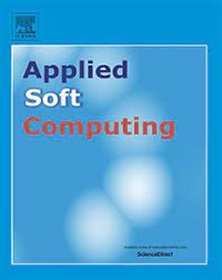Multi-reference super-resolution reconstruction of remote sensing images based on hierarchical similarity mapping
IF 7.2
1区 计算机科学
Q1 COMPUTER SCIENCE, ARTIFICIAL INTELLIGENCE
引用次数: 0
Abstract
To make full use of the details from multi-reference images and improve the quality of super-resolution reconstruction of remote sensing images, a multi-reference super-resolution reconstruction of remote sensing images based on hierarchical similarity mapping is proposed. It is very important in both military and civilian fields. Firstly, one low resolution image and three reference images are used as the input of VGG network to extract their feature maps at 4 × , 2 × , and 1 × scales. These feature maps at each scale are respectively blocked and used as a set of inputs in subsequent operations. Specifically, the low resolution features are divided into blocks, and each block is further divided into sub-feature-blocks. And the reference image features are divided into sub-feature-blocks. Then the low-resolution sub-feature blocks are mapped for similarity with the reference features within the range of all reference sub-feature blocks, individual reference features, and all reference image features. The outputs of each layer are then iteratively mapped with the low-resolution features as inputs for next layers. Thus the final features include information from all the reference images and low-resolution image. Subsequently, an adaptive transfer module with multi-reference features and channel attention is used to match and transfer the information of each reference image, while achieving edge smoothing and noise filtering between different reference features. Finally, the quadruple super-resolution reconstruct result is got from the multi-scale feature fusion module and decoder. Experimental results show that our improvements can reconstruct better super-resolution results with more details for utilizing information of multi-reference images, which is superior to single image super-resolution methods and single reference super-resolution methods.
求助全文
约1分钟内获得全文
求助全文
来源期刊

Applied Soft Computing
工程技术-计算机:跨学科应用
CiteScore
15.80
自引率
6.90%
发文量
874
审稿时长
10.9 months
期刊介绍:
Applied Soft Computing is an international journal promoting an integrated view of soft computing to solve real life problems.The focus is to publish the highest quality research in application and convergence of the areas of Fuzzy Logic, Neural Networks, Evolutionary Computing, Rough Sets and other similar techniques to address real world complexities.
Applied Soft Computing is a rolling publication: articles are published as soon as the editor-in-chief has accepted them. Therefore, the web site will continuously be updated with new articles and the publication time will be short.
 求助内容:
求助内容: 应助结果提醒方式:
应助结果提醒方式:


